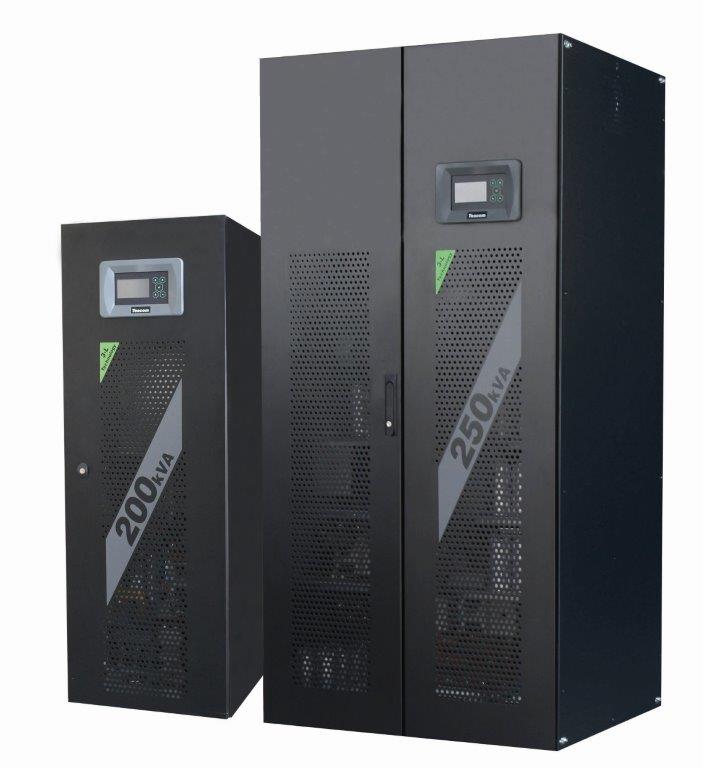UPS ON LINE Modular type
Uninterrupted Power Supply UPS On Line (dual conversion) and protection, with total microprocessor control, with a basic feature of modular design.
UPS modular systems can be easily configured and remodeled to work close to their capacity. Large traditional UPS systems are usually purchased with all the anticipated capacity for the future, so they often run far below capacity for several years, if not forever, which also means a reduction in performance. This can be minimized in a modular system through careful energy management.
Modular design allows one to be able to “base” the unit in line with his current needs and to further expand the capabilities of the system in the future.
Range:
The modular design provides:
• High scalability.
• Quick damage remedy with small cost.
• High reliable operation with backup power.
• Adjustable number of batteries.
• User-adapted charging current.
Other technical features are:
• Normal operation with any asymmetric loads in the phases.
• Cosine correction. (syn φ 0,9).
• Three-phase output, +/- 1%, with the inverter.
• Zero influence from power sources (network or generator).
• Auto bypass in case of overload in 5 ms.
• Parametric adjustment of voltage and output input frequency.
• Compatible system with a power generator.
• Input voltage range 380-400 VAC 3 Phase, 4 Wire, +/- 20%.
• Input frequency range 50/60 Hz +/- 5%
• Low THDi (Total Harmonic Distortion) harmonics ≤ 3%
• Start-up without power supply (PPC or Generator), Cold Start.
• Optionally accepts integrated communication cards, SNMP protocol, RS485, MODBUS, remote display, touch screen graphic display.
• Manufactured according to EN62040 specifications.
• Complies with CE, EN62040-2, EN62040-1, EN60950-1.
The uninterruptible power supply provides additional protection against:
• Instant overcurrents.
• Instant undercurrents.
• Overcurrents.
• Undercurrents
• Harmonics.
• Loss of neutral.


